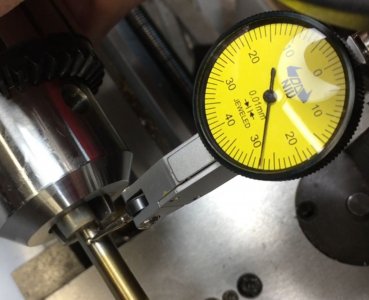VicHobbyGuy
Ultra Member
I didn't expect much when I ordered it from Banggood, but the YouTube Banggood shill (Steve Jordan) said the quality was excellent.
https://www.banggood.com/Machifit-M...er-p-1927133.html?cur_warehouse=CN&ID=6317246
Price for the chuck and the 2MT arbor (and chuck key) delivered was about the same as a Jacobs chuck key from KBC.
Question: If there's less than .01mm runout at the arbor, what's acceptable runout at the base of a new 5/16 drill in the chuck?
(The chuck was cleaned of grease before using).
I'm seeing 0.35mm runout (.014" ?) using a dial test indicator and rotating/slipping the chuck in the lathe tailstock.
Beginner question: this isn't normal, is it?
https://www.banggood.com/Machifit-M...er-p-1927133.html?cur_warehouse=CN&ID=6317246
Price for the chuck and the 2MT arbor (and chuck key) delivered was about the same as a Jacobs chuck key from KBC.
Question: If there's less than .01mm runout at the arbor, what's acceptable runout at the base of a new 5/16 drill in the chuck?
(The chuck was cleaned of grease before using).
I'm seeing 0.35mm runout (.014" ?) using a dial test indicator and rotating/slipping the chuck in the lathe tailstock.
Beginner question: this isn't normal, is it?




